Shelter is a basic need. So essential that Maslow built his entire pyramid on its foundation along with air, water, food, sleep, clothing and reproduction. To have a roof over your head, and a place to lay that head to sleep. To be housed. Being unhoused is—or should be—unthinkable.
Today’s post on tiny houses is the amuse-bouche for Sunday’s “Talking Back to Walden,” with Thoreau building his cabin and more about shelter.
A most fabulous tiny house is a central character in ’s serial novel “Harmony House,” here on Substack. If you haven’t read or listened to it yet, you’re in for a treat. Get right over there (after finishing this essay, of course).1
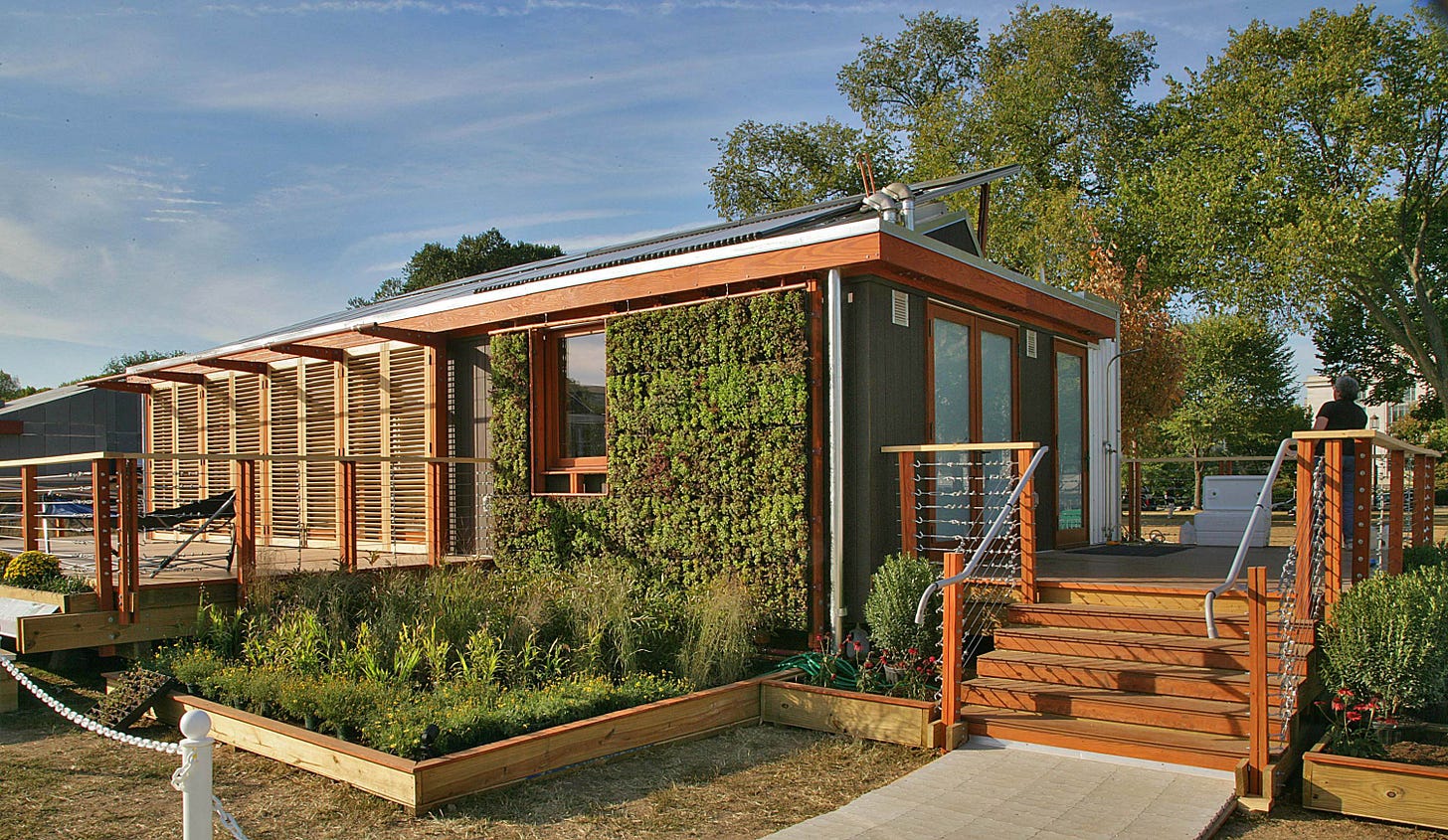
. . . Imagine if I could wear my home and call it my body, wear my body and call it home. ~ Maggie Smith
In her behind-the-scenes essay about her poem, “Slipper,”
writes that she was “inspired by the idea of being home in oneself.”2 I love her snail-shell image of the home as body, the idea of being at home wherever I am.We have a dizzying number of metaphors for home, organic and otherwise. It’s a nest, cocoon, womb, garden, tree, an oasis, even a zoo. Home is also a sanctuary, blanket, bed, hearth, castle. Owning one’s own house is associated with status, identity, achievement, safety, belonging. It’s synonymous with the American Dream.
Today, I’m going to look at a hot trend that’s already boiled over and is now being re-envisioned—the tiny house movement. Turns out, like most things, it’s not all sunrooms and rainbarrels. Here's Thoreau to kick us off:
“What is the use of a house if you haven't got a tolerable planet to put it on? — If you cannot tolerate the planet that it is on?”3
The first question is famous; I’ve seen it on countless environmental blogs. But the second question is odd, isn’t it? What’s he getting at? It feels like the opposite of Maggie Smith’s being at home in oneself. With so many billionaires hankering to blast into space and colonize Mars, I see a restlessness in their intolerance, their inability to belong and certainty there’s somewhere better to be. I’m willing to bet my electric car that the source of that restlessness is at the deepest roots of our environmental crisis.
Well now, I’m 450 words in and already name-checked two impossible crises. Who’s the restless one here?
My fascination with tiny houses led me to join a huge interdisciplinary team to design and build LEAFHouse, the University of Maryland’s entry in the DOE’s 2007 Solar Decathlon competition. LEAFHouse, which stands for Leading Everyone to an Abundant Future, borrowed both its name and design inspiration from the leaf, nature’s original solar collector. With a team of students, faculty, professional and industry mentors and sponsors, we created a not-so-tiny 800 square foot (42 square meter) house powered entirely by the sun.

For a week, schools from around the country and Germany set up their houses on the National Mall and competed in ten contests to demonstrate livability, technical competence, good design, and a clear, compelling public message. The house came in first in the U.S., second overall. (That German house was a juggernaut.) Solar Decathlon was a wild experience with towering highs and dismal lows. Gallows humor saw us through. My co-faculty advisor, the principal investigator, quit at least twice. LEAFHouse changed us all. I’m still so proud to have been involved.
Tiny houses are adorbable
It’s easy to like tiny houses. Clever storage, diverse aesthetics, affordable, resource-efficient, portable, can be self-built and mortgage-free. Check these out:

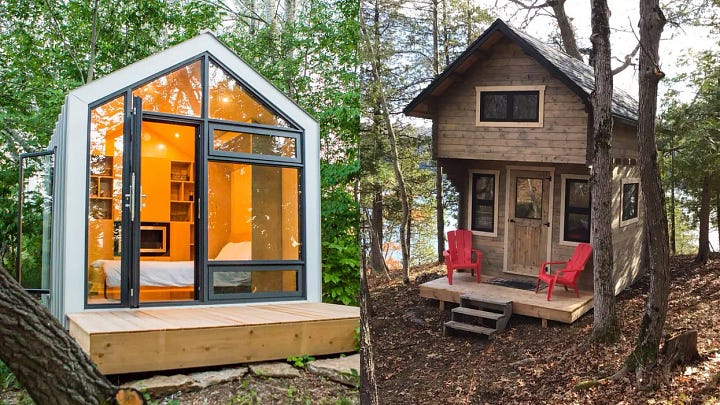
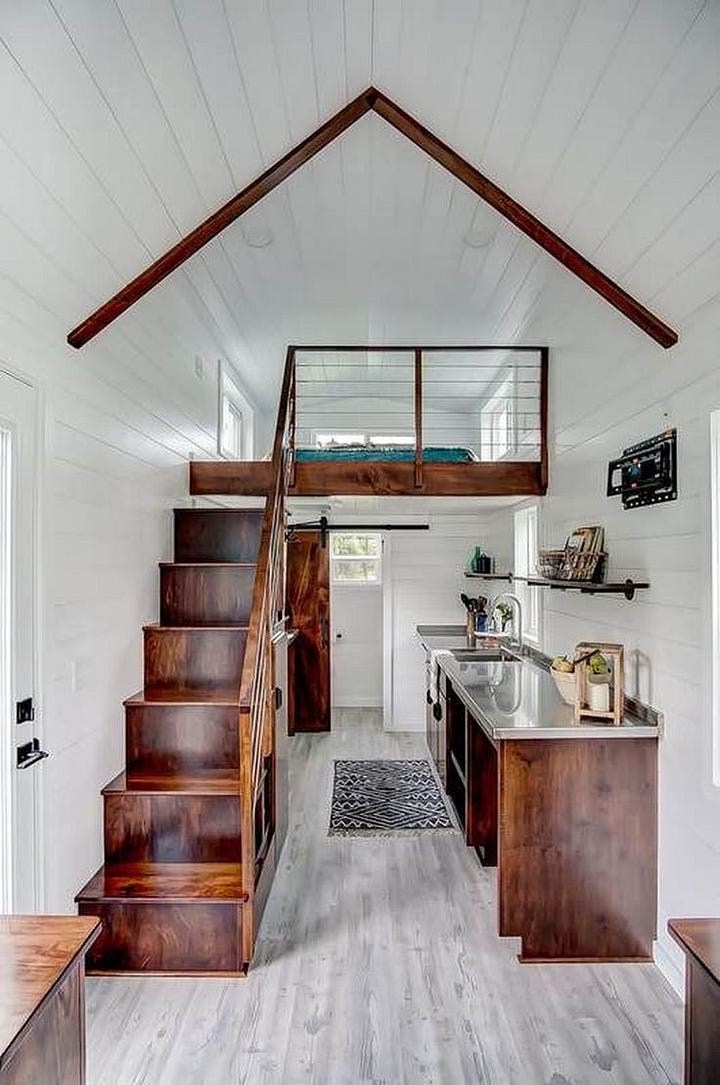
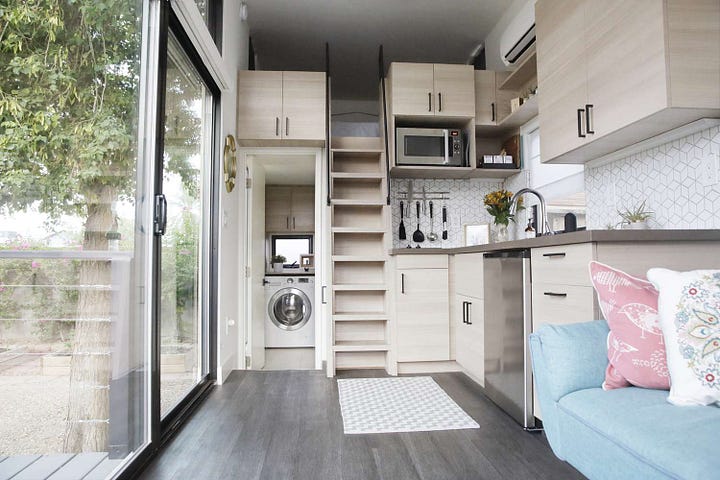
Tiny houses will save us
You can build your own tiny house, according to Dee Williams in the “Sustainable Happiness” section of Yes Magazine.4
“My house offers 84 square-feet of living space and cost about $10,000 to build. It was built for the highway, but—honestly—it isn’t anything like a travel trailer. It doesn’t contain any space-age plastics or fake wood. Instead, it’s the real deal: knotty pine, cedar, and fir.”
The author elaborates the many benefits of living small: set up in a friend’s backyard, she buys less stuff because there’s nowhere to put it; she takes shorter showers so as not to impose on her friend’s generosity, thereby saving water; and heating costs a mere $8 a month.
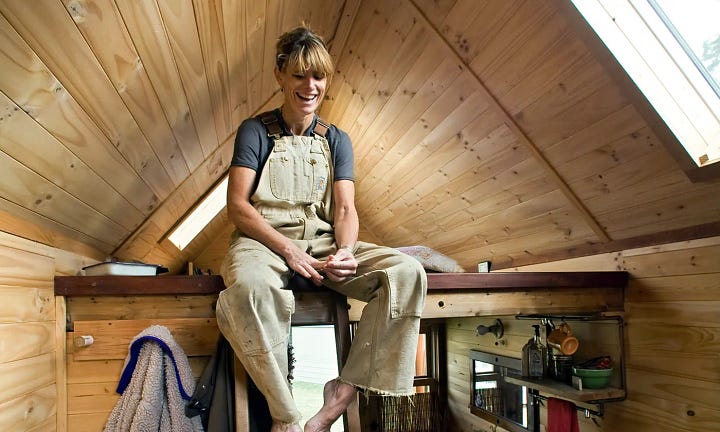
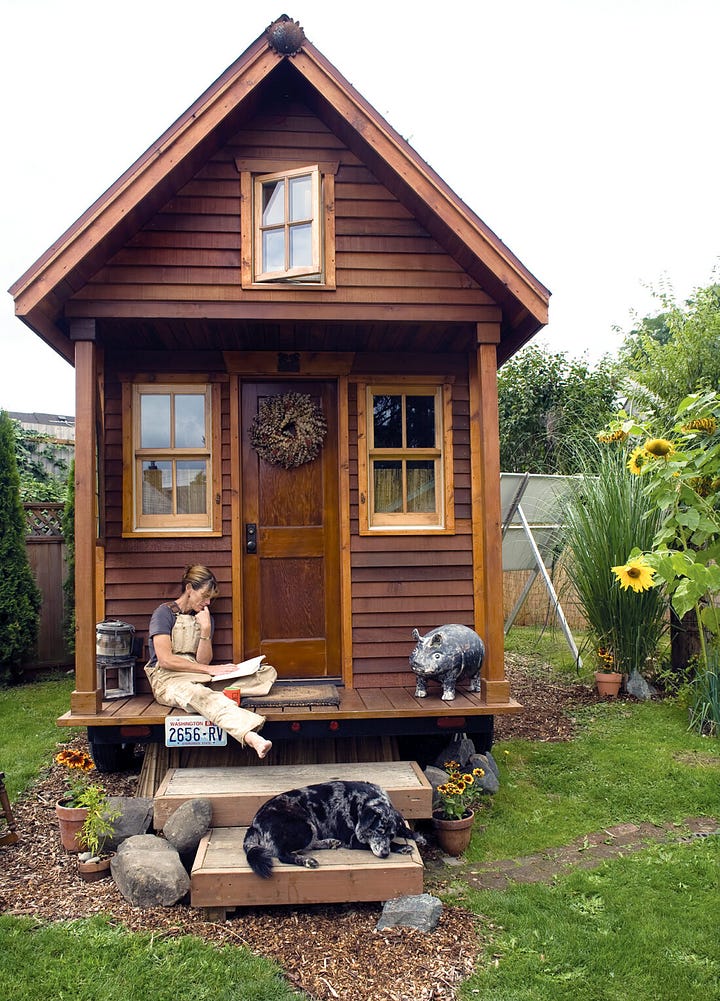
Tiny houses feature on many blogs and magazines, websites and films, even a reality TV series. The Tiny House Blog was started in 2007 and is still active. Recent articles include preparing for emergencies, advocacy for policy changes (such as allowing “Accessory Dwelling Units” or ADUs in people’s backyards), how tiny houses can yield future financial independence, and how to go solar—or at least cook with a solar oven.5
For those looking for tiny house plans, websites picture models that range from rustic to modern—something for everyone. Some are even “certified green,” whatever that means.6
The 2013 film, “Tiny: Finding Home in 124 Square Feet,” debuted at the South by Southwest Festival. A young man on the eve of his 30th birthday contemplates putting down roots. He sets off to research and build his own tiny house.7 Speaking from his tiny house, an early adopter says:
“The primary asset that comes with a small house is freedom. It’s really just, ah, the world gets a lot bigger when you’re living small, because I can afford to do a lot more things now in terms of both cash and time.”
Christopher Smith never built anything before, so he’s in for quite an education, as is his reluctant partner, Marete Miller. From the looks of the movie trailer, it’s part quest film, part coming of age. What’s more empowering than building your own house from the ground up? (Just ask Thoreau.)
As fascinating as tiny houses are, the stories behind them are just as compelling. That’s the premise of the reality show, “Tiny House Nation,” which ran for 90 episodes over five seasons from 2014 – 2019. (Limited episodes available on Netflix). Producer John Weisbarth travels across the U.S. with tiny house expert Zack Giffin to profile families facing challenges and starting new chapters—people from all places and walks of life building tiny houses to solve their problems. From a Sonoma County volunteer firefighter who lost his house in the 2017 wildfires, to newlyweds testing their marriage before it begins, to empty-nesters downsizing so they can afford their daughter’s college tuition, there’s a tiny house to fit everyone’s story.8
And in case you were wondering, there’s even a Tiny House category on AirBnb. They’ve become the highest grossing “unique space type” on the platform, producing $195 million in revenue for hosts in 2021. Most are in beautiful rural areas, lakeside or forest, and I found a house-boaty one at a marina. They’re not giving them away! This one is $243 / night and has its own hot tub.
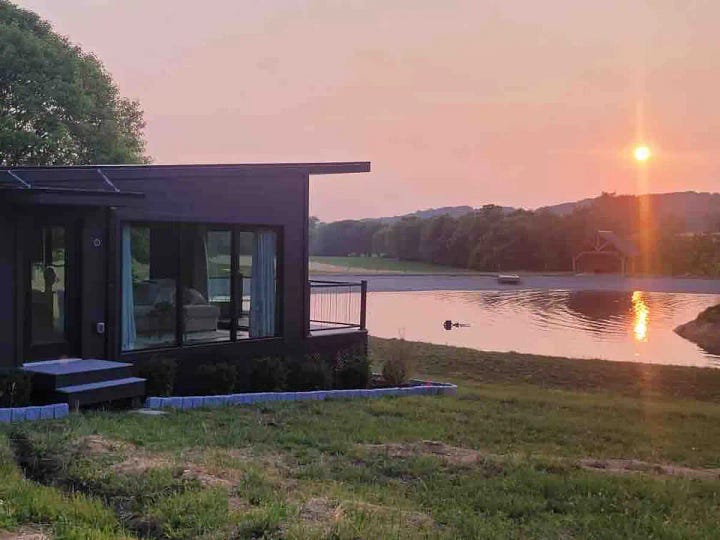
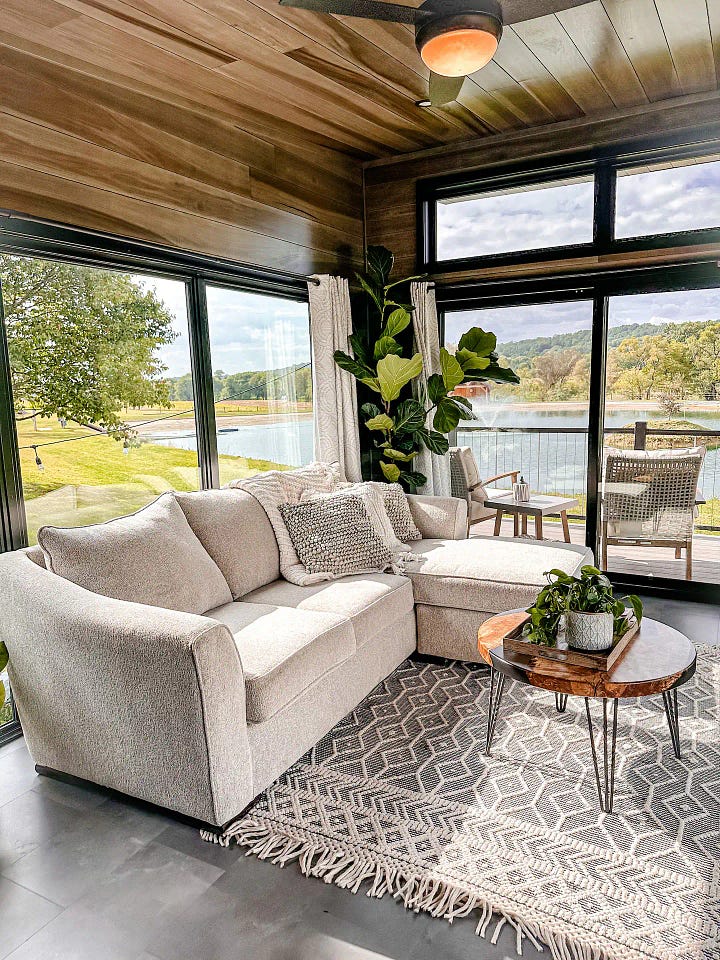
Tiny houses won’t save us
I learned about the AirBnb category from an excellent Grist magazine article on the history of tiny houses, “Did big expectations doom the tiny house movement?” It’s an honest look at how the craze swelled and blew up. Subhead: “Tiny houses started as a minimalist revolution. They ended up as an Instagram aesthetic.”9
It's well worth a read. Tiny houses have had great appeal as a solution to environmental problems and a way to simplify life. As the movement grew, however, it has faced criticism for being unrealistic and impractical. Tiny houses can be expensive to build and transport and may not be a good investment in the long run. They may not have enough space for belongings and can be difficult to live in if you have a family or pets. Restrictive zoning laws often make them difficult if not impossible to legally permit.10
Who knew? Turns out that tiny houses are not a panacea for environmental problems or the affordable housing crisis. Nor are they a solution to homelessness, despite what some may claim. Have you seen that social media video where the guy buys a garden shed at Lowe’s and fits it out for a homeless guy in his neighborhood?

In a November 2021 blog post, the formerly homeless author, John Henry, eviscerates the topic and I would expect no less from the title: “Screw Your Tiny House And The Tiny Horse It Rode In On.”11
He provides a firsthand perspective on the challenges faced by those without stable housing and argues that the problem is not a lack of housing but rather a surplus of empty homes. Resources would be better spent on addressing the root causes of homelessness and ensuring that existing housing is utilized effectively. He cites statistics on vacant housing units and the number of homeless individuals:
“In this country, right this minute, there are half a million or so people who will sleep on the streets tonight…and we have enough empty housing units for every homeless person in this country to have thirty places to live."
Henry highlights the social and economic implications of the tiny house movement and argues that it perpetuates a system of inequality and waste. While he acknowledges the good intentions of those involved, he sees it as a misguided approach to solving such a complex problem as homelessness. The focus should be on providing adequate housing for all, rather than creating temporary solutions that do not address the underlying issues.
Tiny houses are almost all right
In the Grist article, advocate Merete Mueller blames the backlash to the fawning media coverage of the early years.
“Maybe if it had been framed in a more normal, realistic, middle-of-the-road way, it wouldn’t have had such a peak and decline,” she said. “I actually think that the most realistic representation of tiny houses is that it’s a thing that people do for a number of years to get to the next stage in their life.”
As if on cue, tiny houses are indeed getting a capitalist reframe as real estate developers recognize the value of building compact neighborhoods like South Park Cottages. Located in College Park, GA, this claims to be the first Black-developed micro-community in the U.S. The 29 houses sold in record time. With the average rent in Metro Atlanta at $2,000 / month, the average mortgage at South Park is said to be $1,500. The houses range in size between 335 to 615 square feet (31 to 57 square meters).12 The developer, Booker T. Washington, says:
“The goal is abundance in all forms and those goals are homeownership. Those goals are a revitalized community, connectivity and connection. College Park accepted that challenge and our commitment to this community and its leadership will be one that stands the test of time.”13

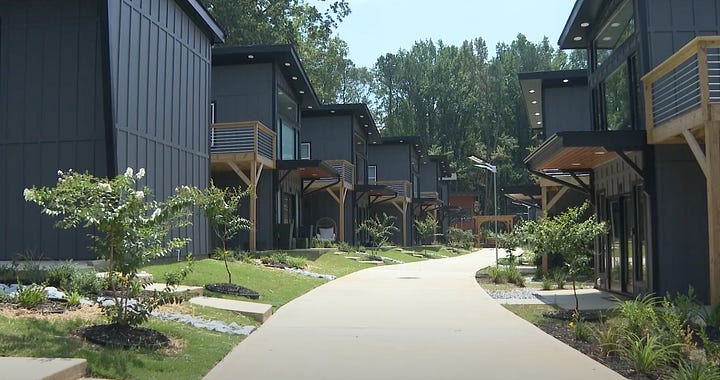
The houses appeal to singles, couples, retirees. Mr. Washington has a winning formula of targeting neighborhoods with a diversity of residents, lower land costs, community buy-in, and flexible zoning to fit the houses in a small area. He says over 3,000 people are on a waiting list for one of his houses and has already broken ground on another micro-community in Union City, where a 2-bedroom, 1-bath unit is priced at $220,000.14
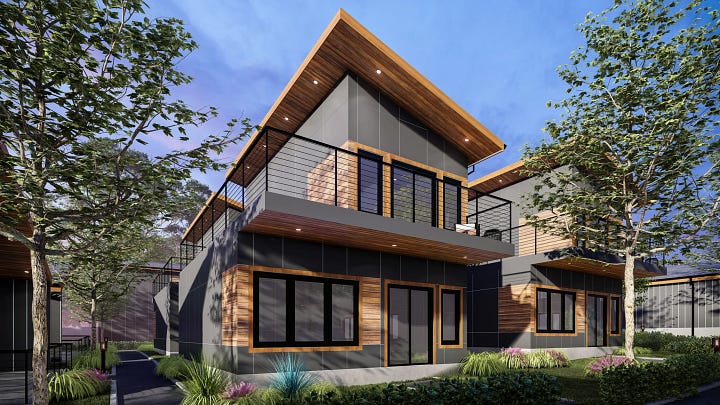

In the first wave of tiny-house mania, they were pictured in sublime, wide-open landscapes. As if that was the promise: anyone could live 100 miles from civilization on their own private prairie, mesa, river, lake, bluff, forest glen. What a dangerous, disingenuous, wasteful fantasy. We are social creatures. We need each other and we need community. And we don’t need to keep sprawling over more precious land.
Though I’m always leery of what happens when capitalism gets hold of a grassroots idea, I’m glad to see Mr. Washington thinking creatively to meet an obvious need in his community. He’s redeemed tiny houses from their hyper individualism, to aggregate them into a dense neighborhood embedded within an established community.
Americans are often hostile towards density. Yet our most livable, arguably beloved places have fairly dense populations. Compare the average number of people per square mile living in such places with the typical suburban range of 1,800 – 2,000:
Bethesda: 5,000
Baltimore City: 7,200
Washington, D.C.: 11,500
San Francisco: 18,600
New York: 29,300
South Park Cottages tiny house community: 9,50015
Since the mid-20th century, we’ve been sold a version of community that has deeply undermined real community. Whole sections of libraries are stuffed with books critiquing the suburbs, but it’s density that gives us the corner café, the farmer’s market, the easy walk to school / library / work / gym / movie theater—the delights of which people young and old are discovering by moving from suburban isolation back into cities all over the country. It’s not simply a matter of affordability. It’s a matter of the connection, mutual aid, strength, support, advancement and joy of community.
Phew! That was longer than I had planned. If you made it this far, thank you for sticking with / indulging my extended nerd-out on tiny houses. What’s your connection to them? Did reading this change how you see tiny houses, or deepen your appreciation for their potential?
Since this post was published, we began donating 30% of paid subscriptions to a different worthy environmental cause each season. So far, paid subscriptions have supported the Indigenous Environmental Network, the Old Growth Forest Network, and the Center for Humans and Nature. Track past and current recipients here.
Here’s the link to the T.O.C. He’s even doing a live reading of the final episode this Saturday (tomorrow!).
Letter to Harrison Blake (20 May 1860); published in Familiar Letters (1865)
The article is here. I’ll leave it to you to search further on Instagram. I’m resisting that rabbit hole after my lengthy foray on AirBnb.
Here’s a gift link to a well-written New York Times article about the pitfalls and limitations of a couple living in a tiny apartment. An article in Country Living, “Are People Actually Happy in Tiny Houses?” (answer: no) is here. Another, “The Tiny-House Dream Is Actually a Nightmare,” is here.
Source: this article.
from Mr. Washington’s Instagram post
From their website.
Based on this calculation: a 2.5-acre site = 0.004 sq. mi. Assume 1/3 of the 29 houses have 2 occupants, the rest live alone, for a total population of 38. Divide 28 by 0.004 to get 9,500. That’s pretty dense!








I live in a 400 sq ft tiny house and love it and my garden. I have no stairs (a ramp into the side door), a screened in front porch, and an open side deck. The house is in a cul-de-sac with other tiny homes and RV spaces. My art surrounds me in the house and I am grateful for how much I like living small.
I love the fantasy of leaving all my pelf and living small, but then I think, On whose back acre? Emerson’s? Living on road-worthy tires instead of a foundation is definitely temporary. But, oh, they make great magazine photos - like those long country tables set for picnics with laughing families. Even the children are laughing. No child shouts as the camera snaps, “Quit it, Danny! That’s *mine*! Mooommm!!”
Ouch! I just tripped over one kid’s boot, another kid’s laundry pile, my own stack of papers and the cat, all while typing this. I might need a bigger house. 🙄
PS - Gorgeous Leaf House! Congrats on the award. Wonderful essay. I read the whole thing. :-)